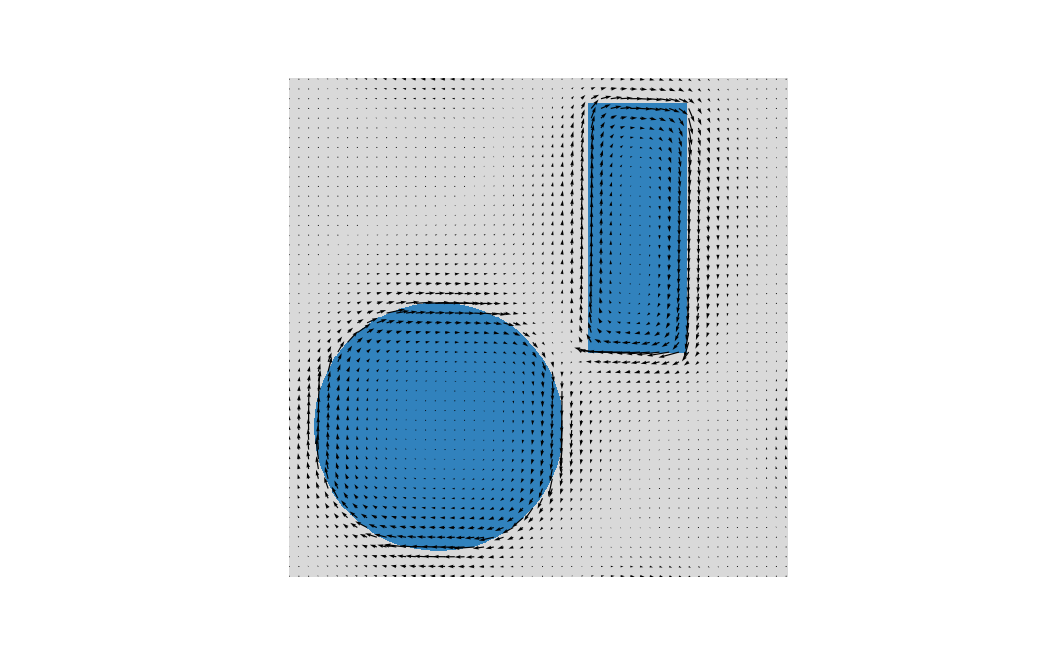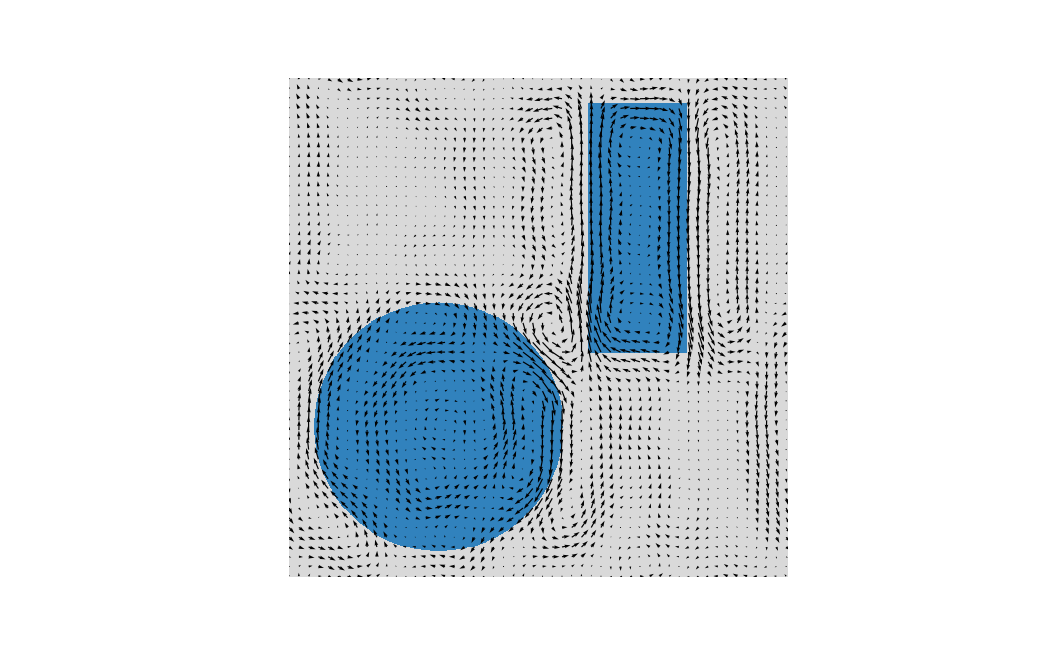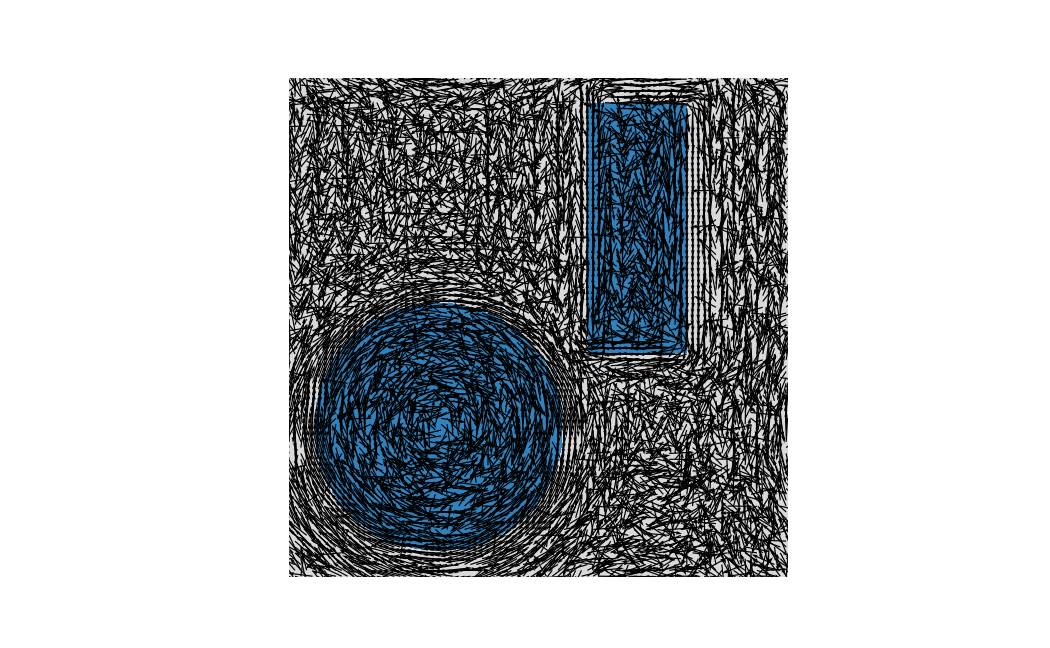Note
Go to the end to download the full example code. or to run this example in your browser via Binder
Tangent field#
import importlib
import time
import matplotlib.pyplot as plt
import nannos as nn
from nannos.formulations.tangent import get_tangent_field
We will generate a field tangent to the material interface
nh = 1500
lattice = nn.Lattice(([1, 0], [0, 1]), discretization=2**9)
x, y = lattice.grid
circ = lattice.circle((0.3, 0.3), 0.25)
rect = lattice.rectangle((0.7, 0.7), (0.2, 0.5))
grid = lattice.ones() * (3 + 0.01j)
grid[circ] = 1
grid[rect] = 1
st = lattice.Layer("pat", thickness=1, epsilon=grid)
lays = [lattice.Layer("sup"), st, lattice.Layer("sub")]
pw = nn.PlaneWave(wavelength=1 / 1.2)
sim = nn.Simulation(lays, pw, nh)
dsp = 6
FFT version
t0 = -time.time()
t = get_tangent_field(grid, sim.harmonics, normalize=False, type="fft")
t0 += time.time()
print(f"Elapsed time {t0:.4f}s")
plt.figure()
st.plot()
plt.quiver(
x[::dsp, ::dsp],
y[::dsp, ::dsp],
t[0][::dsp, ::dsp],
t[1][::dsp, ::dsp],
scale=20,
)
plt.axis("scaled")
_ = plt.axis("off")
plt.show()

Elapsed time 1.1502s
Optimized version
t0 = -time.time()
topt = get_tangent_field(grid, sim.harmonics, normalize=False, type="opt", maxiter=1)
t0 += time.time()
print(f"Elapsed time {t0:.4f}s")
plt.figure()
st.plot()
plt.quiver(
x[::dsp, ::dsp],
y[::dsp, ::dsp],
topt[0][::dsp, ::dsp],
topt[1][::dsp, ::dsp],
scale=20,
)
plt.axis("scaled")
_ = plt.axis("off")
plt.show()

Elapsed time 1.3891s
Optimized version (normalized)
t0 = -time.time()
topt = get_tangent_field(grid, sim.harmonics, normalize=True, type="opt", maxiter=1)
t0 += time.time()
print(f"Elapsed time {t0:.4f}s")
plt.figure()
st.plot()
plt.quiver(
x[::dsp, ::dsp],
y[::dsp, ::dsp],
topt[0][::dsp, ::dsp],
topt[1][::dsp, ::dsp],
scale=20,
)
plt.axis("scaled")
_ = plt.axis("off")
plt.show()

Elapsed time 1.3228s
Total running time of the script: (0 minutes 5.623 seconds)
Estimated memory usage: 1136 MB

